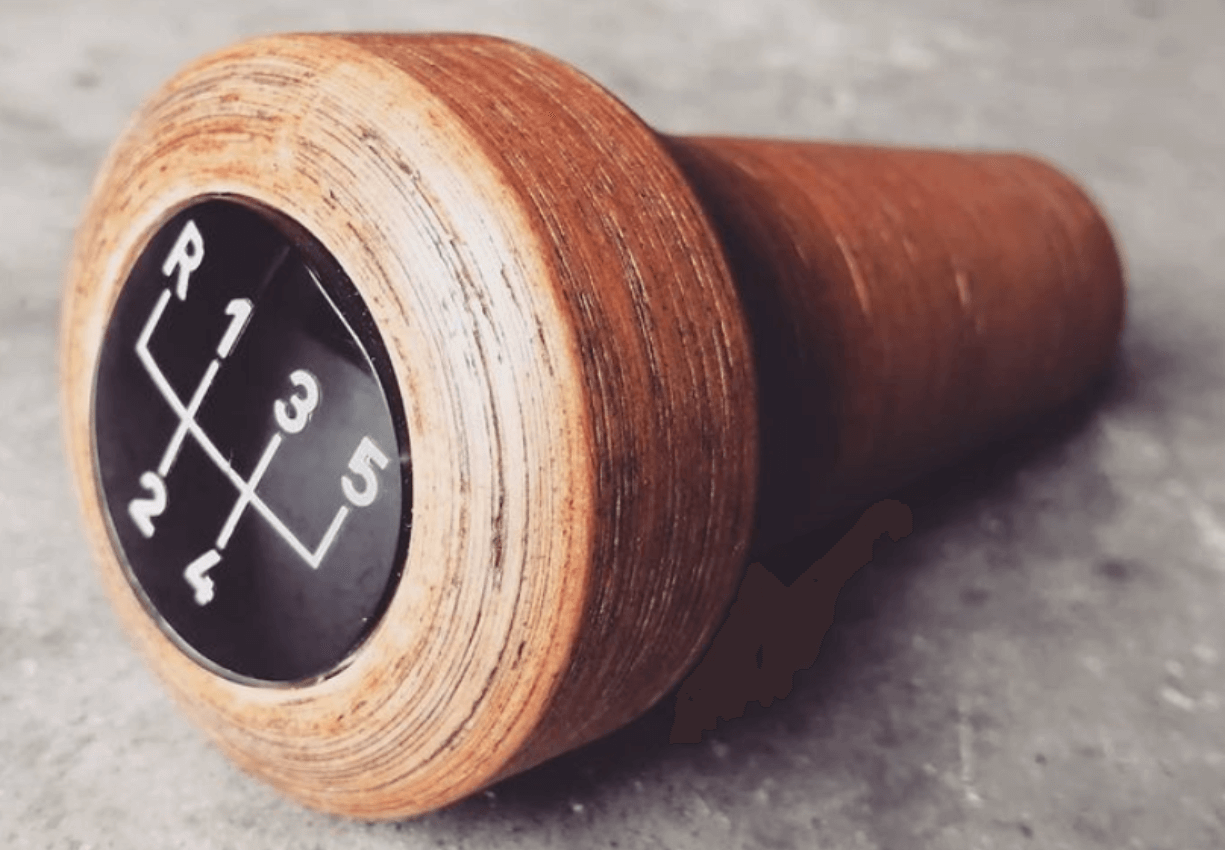Business How-To's
The “Insider-Secrets” Bulk 3D Printer Filament Savings Guide - Reduce Costs of Running Your 3D Printing Business By Up To 40%
20 July 2023

Reducing costs in your 3D printing business is key to building an income that lasts and is actually profitable for you to run. Naturally reducing FDM filament or resin costs is one of the most obvious ways to cut costs in businesses like ours.
Having run a pretty successful filament production company (rigid.ink Ltd) back in the day, I know a thing or two on anything 3D printer consumables-wise, especially when it comes to getting better prices from suppliers or just using less of it. So you will not find many of these industry-insider tips elsewhere.
What’s more, all of the techniques below are ridiculously fast to implement (well, no.4 isn’t - but it’s well worth it…) so this guide is going to provide a massive return on your time invested.
In this guide, we’re going to look at some little-known ways to both lower the price you’re paying for your base material costs, like ordering 3D printer filament in bulk AND reduce the filament you’re using, so you can run a business with less stress and more profit.
And no, we’re not going to talk about ordering the cheapest $10 per spool rubbish you can from China, wasting all your potential cost savings in fixing printer breakdowns because it’s forever clogging and ruining your prints 💀
And while you don’t need me to tell you why you should want to save your own money - I do want to quickly illustrate the importance of a line of thinking you may not have considered…
Let’s say you’re running a $10,000 / month 3D printing business, and you’re spending $1,000 per month on filament, and you’re spending $1,000 / month on ads - just reducing these material costs in total by 30% would save you about $300 per month.
Now that alone doesn’t sound like much. But… if we take that $300 and then put it back into your ads, you’re effectively increasing your advertising budget by 30%. And if we’re running well optimized advertising campaigns, this extra budget could mean you could increase your top-line sales 20-25% (likely not the full 30% because; scale).
So that could mean we take your business from $10,000 per month, to $12,500 per month, likely bringing you an extra $15,000 - $20,000 per year in profit. All from the 7 steps I’m about to share with you below…
Sound good?
Let’s look at what we can do about that, then (and no, we’re not going to start with the obvious wholesale 3D filament just yet)...
-
1) Reduce your options:
This might sound odd (some of the stuff on this page might), but stay with me - many filament suppliers offer discounts for bulk orders of the same colour / material. So if you’re offering 3 different materials, in 10 different colours each, that’s 30 different materials.
That means you can’t order as high quantities for a single product (like just PLA - black, or a colour of ABS filament in bulk for example). So if you cut down your options, it’ll simplify your business and give you more purchasing power when negotiating with suppliers.
And I’ve spoken extensively in the past about how reducing the options you offer your customers can actually increase your sales (no, really).
Which leads me onto… -
2) Invest in a low-friction spool holder:
With a larger, low friction spool holder, you can use 3KG or 10KG spools without straining your extruders. Now you only need 1 or 2 different filaments, you can commit to larger rolls, reaping further cost benefits.
These bigger rolls are not always more cost effective, but often you can save a good 15-20% with bigger spools - so its worth doing some quick maths to see how much you could save.
You’ll also save time swapping spools, or wasting that half-batch end of roll material before swapping out, so it’s a win-win.
Some suppliers are also offering spool-less refills, so you can save money ordering reels of material without the heavy and bulky spools.
If you’re using resin, this might mean a switch from 1KG containers, to 5KG or 10KG.
-
3) Negotiate your price:
OK, so here’s the “obvious” tip - but not for the reasons you might expect.
So after steps 1 and 2, with fewer options, now you can more accurately work out how much of a given material you’re using per month (i.e say you’re averaging 35 KGs of black PLA per month), you can look for suppliers that offer regular quantity discounts.
See if you go to a filament supplier and ask for a discount price for say 30KGs of bulk pla filament, you might get like 5 or 10% saving. But if you say to them, we need 20KGs of this every month (indefinitely), you’ll be able to negotiate even more of the price.
That’s because filament suppliers really value consistent customers, because then they can more accurately plan their production schedules.
Trust me, it’s expensive every time you have to flush an old material / colour on an extrusion line out of the machines to switch to a new one.
Back when we ran rigid.ink - many of our best customers “subscribed” to X amount of rolls per month. The customer didn’t need to worry about re-ordering, and we even gave them an additional discount per month to ship them exactly the same order each time automatically.
So it’s key to know how much you’re currently using in filament, because this way you can confidently commit to certain order sizes or ordering frequencies (i.e once per month, or bi-monthly, for example) and if you know what you need and when, your supplier will respond a lot more favorable to your requests.
And if the customer needed more or less to adjust - this was usually just handled easily because they were high value, easy to deal with customers, so we were happy to adjust accordingly.
You might want to do this with a couple of suppliers to play them against each other (I almost hate that I’m telling you this - joking!) and prioritise local suppliers to save on delivery costs.
Many filament suppliers have a bulk or wholesale pricing section or quantity / subscription price breaks on their website, but regardless, it’s ALWAYS worth emailing them to negotiate a further price.
Read on to get my free email template that I and our clients have used with great success to negotiate your own best-price from your favourite filament supplier and reap the rewards! It has proven negotiation skills embedded that will help you get a better price.
This one email template could save you thousands of dollars a year.
-
4) Reduce waste:
Some articles out there will suggest that your recycle your filament. This is ridiculous and impractical.
Warning: this tip does require a bit more effort - but it’s well worth it.
3D Printing is a wasteful exercise for two reasons; one is failed prints, and the other is excess material in the model.
As humans, we under-play how important both are. But rather than looking what to do with all that wasted filament, we should look to strike at the source…
To reduce failed prints to near 0 (yes, this is possible in business) - make sure you invest in a high quality printer that once it’s setup, with 1 material in 1 colour, it will just print and print and print without fail. Cheap printers will cost you way more in time in the long run.
You could even upgrade to automation software like 3DQue, because printers that don’t need humans touching them run even more reliably (don’t feel bad; I think it’s just a “machines and software thing” that us humans just don’t get…).
And if you’re not sure what’s best for a print farm printer, checkout my 3D Printers For Business Buying Guide.
One thing I also notice with 3D printing business owners, is they notoriously wait too long to do routine maintenance on their 3D printers. Hey, no judgement here - I’ve been guilty of this myself. But doing the basics before they break down, can be massive - I mean you’ve heard the ol’ “an ounce of prevention is worth a pound of cure”…
So make sure you’re cleaning and lubricating everything that moves on your printers, and replacing any parts that are looking to wear out (or that typically need replacing on your model).
As for excess material in the model. Nearly all 3D prints can be reduced 10-30% of material usage without lowering the usability or life-span of the end-product. This is done with tweaks to the design and improving inefficiencies in the Slicer.
We can even get super granular, like switching the infill pattern design to something more efficient, like gyroid - which is super strong, so you can use a lower infill percentage.
⚠ Just don’t use honeycomb, because while it’s strong, it takes a lot longer to 3D print (Stephan at CNC Kitchen did a lot of research on this).
When we first design our models to print (or pay someone else to do it) we might not be trying to completely optimise the model. Our priority is often just for the model to be popular with customers and get it “to market” in a short timeframe.
And so it should be, but then once we’re selling hundreds (and ideally before that point) - even just reducing material usage by 20% can have massive implications for our business.
We won’t just reduce printing costs by 20%, we’ll also reduce printing time by 20% - which is like getting 20% more production capacity (e.g more printers) for free.
I speak with my clients in detail about how to use a Minimum Viable Product method to reduce a print down to save time, money, increase customer satisfaction AND make more money.
OK, I’m not trying to make this sound like the holy grail or anything but it’s pretty important…
-
5) Group models:
Your bed and printing model have an optimum ratio, so it’s worth experimenting on this to make sure you’re maximising the space on the bed for the most amount of prints you can get out of a single print.
Just be wary of over-filling the bed and causing print fails because of it. Orientating the parts may allow you to fit more in without over-crowding.
I’d also suggest printing the parts sequentially (one completed after the other) so that if one fails it’s less likely to ruin the whole batch - you just need to match sure there’s a enough room for the extruder not to crash into the other completed prints.
-
6) Apply to other expenses:
Its important that these tips above don’t just need to be applied to filament or resin savings. So don’t stop looking for discounts there.
You can shave costs in many areas of the business. One of our clients closed his workshop that he was paying high rents for, and took ¼ of those monthly payments to take out a low interest loan build a workshop in the bottom of his garden (also increasing home value at the same time) for example.
Using a combination of all the strategies I’ve outlined above, you can see how you can easily reduce the costs of running your business by 30-40% or more. Giving you more to play with when looking to grow, or just investing that money in areas that can further save you time and effort.
It’s important to remember though, that while you can reduce costs in a business - you can only reduce these so much, and you don’t want to do it at the expense of growth or increased profits.
Therefore, unnecessary costs should be shaved frequently, but necessary investments into high return on investment activities (like getting education to better run your business, for example) should be prioritised.
Because there’s often a limit to how much money you can save in your business, but there’s often no limit to how much you can make with your business.
Click the button below to get the email template to send to your suppliers to negotiate a far bigger discount on your filament, as promised.
To get more tips like this, I recommend subscribing to my Friday Factory newsletter, where each week I share tips and mindset shifts to help you run a more profitable 3D printing business more easily.
Share this post on:

Ed Tyson
Having successfully scaled multiple ecommerce businesses on a variety of platforms & been featured in online 3D printing publications, he's now looking to help you increase sales of your 3D printed products and identify higher-margin product opportunities to build your wealth.
OTHER POSTS
-
29 August 2023
-
06 August 2023
-
18 July 2023
CATEGORIES
CONNECT WITH ME
Ed Tyson
SUBSCRIBE
Tell us where to notify you when we post:
ABOUT US
The #1 Authority on helping 3D printing businesses scale by finding more profitable, easily 3D printable products, that customers want to buy.
If you’re looking to make more money with 3D printers, let us show you how hundreds of businesses have already transitioned away from feeling overworked and underpaid, to enjoying a solid income and loving their freedom.
© Copyrights by rigid.ink trading as The Institute of 3D Printing. All Rights Reserved.
success@io3dp.com | (+44) 1937 589 052



 they can 3D print, then help them scale up sales
they can 3D print, then help them scale up sales  so they can dramatically increase their income.
so they can dramatically increase their income. 
 and have fun doing it!
and have fun doing it! 

